| The Silk Road from Khiva to Samarkand |

|
Some photos taken on a trip to Uzbekistan in Central Asia where we visited the cities of Khiva, Bukhara and Samarkand. These three cities were important centres on the Silk Road, the ancient trade route from China to the west, although in this area there was more than one road followed by the camel trains going to the Mediterranean or northwestwards. It was the country of Timur (or Tamburlane) and Alexander the Great was also much in evidence at one period of its history. Until the early 1990s it was under Russian rule and there is still much evidence of 'Russification', although it is now independent. Bukhara is well known for its woollen carpets of rich reds and browns but, in fact, they are made in the Bukhara Region which is now in the State of Turkmenistan and are only sold in Bukhara. We saw many on display in the 'trading domes', the undercover areas in the city along the line of the Silk Road itself. However, the most beautiful carpets we saw were those made of silk or sometimes of silk on a cotton warp. The designs are much finer and clear in various colours of cream. browns, reds, blues and pinks. There is a sheen to these carpets which change with the direction from which they are seen. On our free afternoon we returned to a medressa (Muslim religious school) which was used as various craft workshops. There we saw perhaps thirty hanks of silk hanging up to dry, having been dyed with natural dyestuffs, pomengranate, indigo, walnut and many others. Without an interpreter and the few labels being in Russian I was unable to find out what else was used, or which mordants. In the workshop were many more skeins of different colours, blues, mauves, greens, yellows and browns. We also saw a carpet on the loom and work in progress, this can take up to a year to make. The workshop also produced tie dyed scarves and blouses of silk. The area around Bukhara is well known for embroidery, silk or cotton on a cotton background which may be a natural or a deep colour. The designs are local to the village or town and vary in type and the stitches used. We saw coverlets for use as bed covers as well as cushions and small articles. At first sight in one museum the design was thought to be applique, the pattern was so solid but it was actually chain stitch very closely worked, and there were other types of infill stitches, satin etc. The name given to these coverlets is suzanni. Girls were expected to make at least two for their wedding, and the women of the family would help with others. These were never finished completely as they would then be perfect and only Allah can be perfect. Best clothes for weddings and celebrations are embroidered in gold thread. The men wear long coats with belts, collars and borders, the women headdresses and caps. We saw this embroidery in progress in the same medressa as the silk dyeing. A piece of velvet is tacked down to a cotton backing stretched on a frame, a cut out paper design laid over and then gold thread sewn down over this. First caught down one side of the pattern, then taken to the other side and caught down there, and back again, it does not pass through the cloth. With small pieces of work more than one person was working at the frame. |
| Click on a thumbnail to view a larger picture. Click the larger picture to return here |
 |
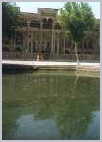 |
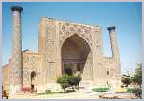 |
 |
| The Char Minar (four minarets) in Bukhara | Reflections of the Bolo Hauz mosque, Bukhara | The oldest medressa in the Registan, Samarkand | The Maghoki-Attar mosque in Bukhara, the oldest in Central Asia |
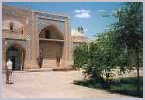 |
 |
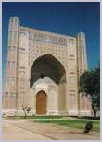 |
 |
| The Kukhna Ark, Khiva, The Ruler's residence | The Islom-Huja minaret, Khiva. Built in 1910 with 118 steps to the top |
The Bibi-Khanym mosque, Samarkand | The Kalta Minar, by the West Gate of old Khiva |
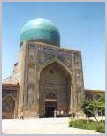 |
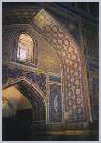 |
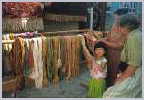 |
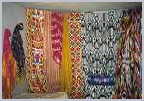 |
| The Tilla-Kari (gold covered) medressa in Samarkand | An interior of the Tilla-Kari medressa | The silk being woven | Traditional fabric designs |
Return to the 'Parkside' home page
Revised Thursday, November 18, 2010 - Alan Gentle


Shakrisabz


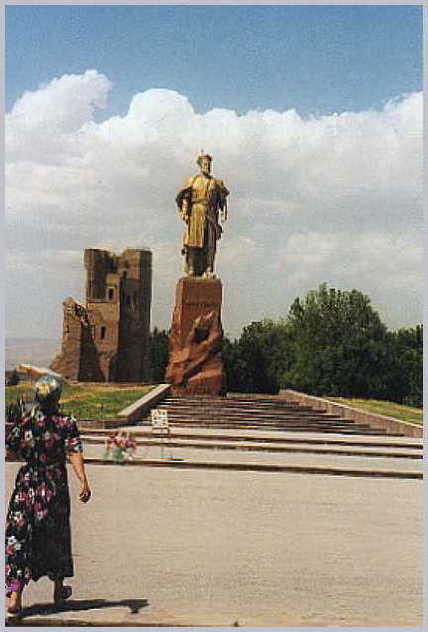



Statue of Timur (or Tamburlane) at Shakrisabz

Bukhara


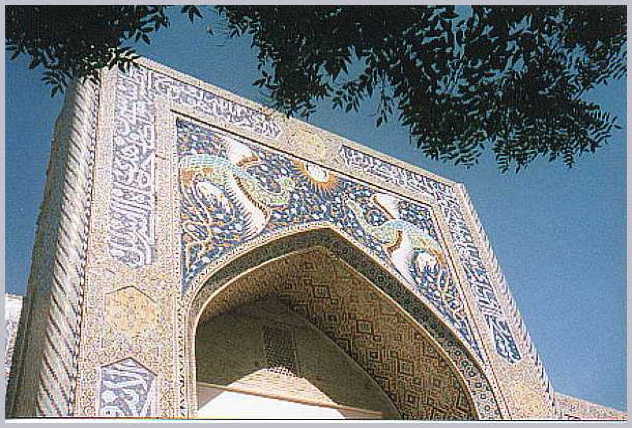


Gateway of Nadir Divanbegi medressa, Bukhara

Bukhara



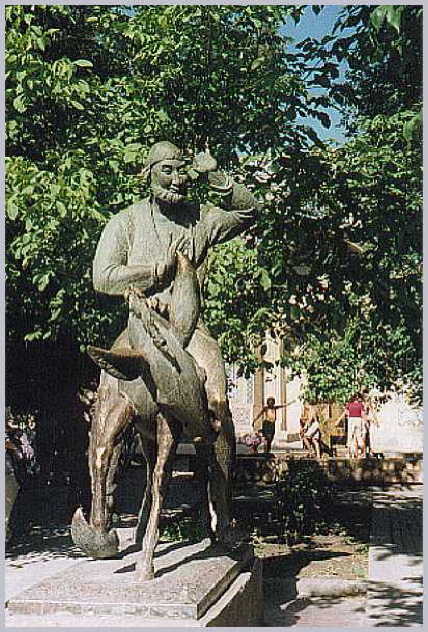



Hoja Nasruddin, the mythical 'wise fool' of Sufi stories

Bukhara



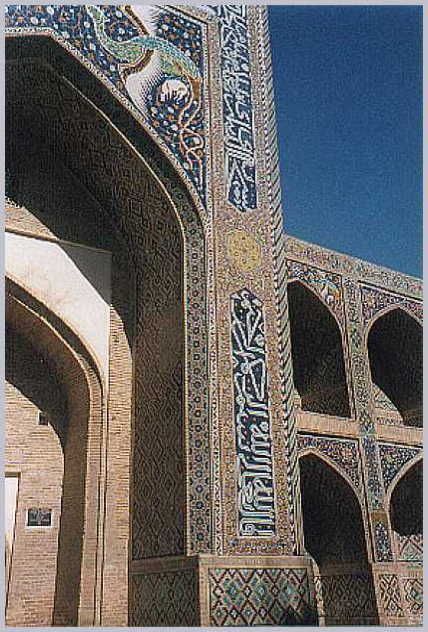



Detail of the gateway of Nadir Divanbegi medressa

Bukhara


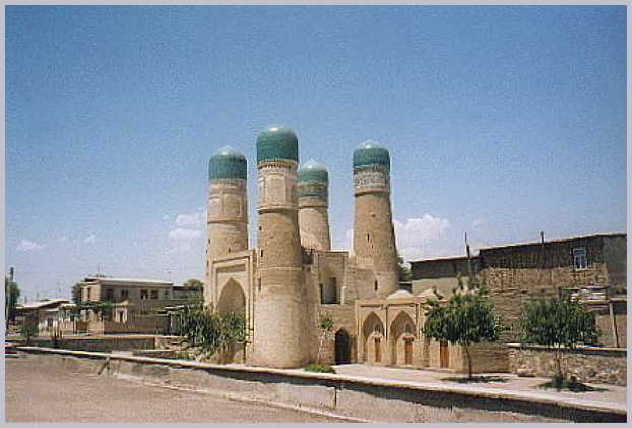


The Char Minar (four minarets)

Bukhara







Reflections of the Bolo Hauz mosque

Samarkand





The oldest medressa in the Registan

Bukhara


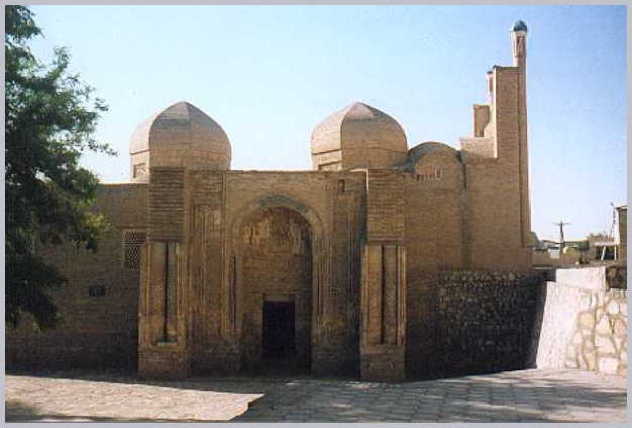


The Maghoki-Attar mosque, the oldest in Central Asia

Khiva





The Kukhna Ark, The Ruler's residence

Khiva



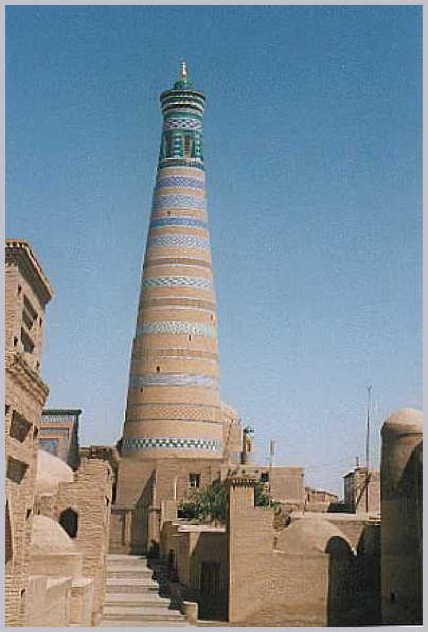



The Islom-Huja minaret. Built in 1910 with 118 steps to the top

Samarkand







The Bibi-Khanym mosque.

Khiva



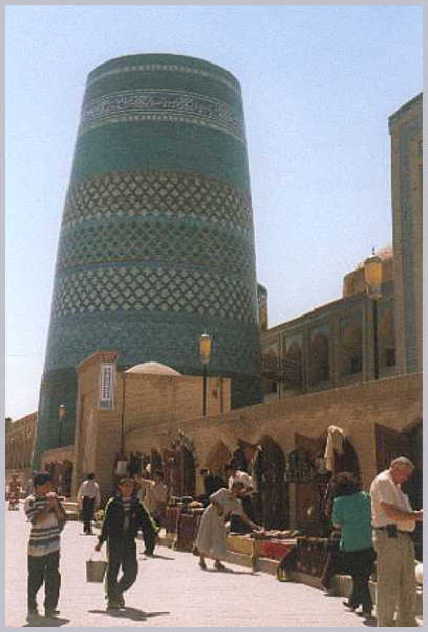



The Kalta Minar, by the West Gate of old Khiva

Samarkand







The Tilla-Kari (gold covered) medressa

Samarkand







An interior of the Tilla-Kari medressa

Samarkand





The silk being woven

Samarkand




Traditional fabric designs
Return to the 'Parkside' home page
Revised Thursday, November 18, 2010 - Alan Gentle




